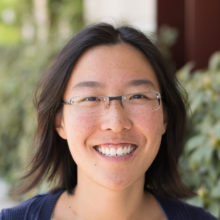PhD candidate, Stanford University
Email
Abstract
Quantum Engineering with Diamond Nanophotonic Systems
One of the emerging and inevitable challenges facing our generation is the creation of high-performance and energy-efficient computing and communication technologies to meet the demand of an increasingly connected world. Quantum technology is coming into focus as a paradigm-shifting discipline which exploits the quantum nature of particles such as photons. It brings the promise of revolutionary applications, such as a photonics-based quantum computers/eigensolvers that would allow us to find solutions at exponentially faster speed than what is currently possible with high-performance classical computers, and quantum communication system that would facilitate truly secure communication that is physically protected from eavesdropping.
Diamond color centers are one of the competitive platforms for realizing these quantum technologies. Diamond color centers are a myriad of lattice defects hosted in the large bandgap material. Like atoms and ions, these nanoscale defect centers have intrinsic optical, electrical, and spin properties, which make them promising on-chip atomic systems. These color centers can serve as quantum nodes that interact through the emitted photons in a quantum network. Recent developments in nanophotonics and nanofabrication techniques enable us to manipulate the light-matter interaction in powerful ways. Lying at the intersection of physics, engineering, and material science, my research combines nanophotonics with quantum optics to explore and utilize the color centers in diamond.
By embedding these color centers in nanophotonic devices, my work focuses on engineering the photonic environment surrounding the color center, thereby enhancing the photon emission, suppressing the undesirable decoherence processes, and coherently controlling the quantum state of the color center. In one thrust to increase the strength of the light(photon)-matter(emitter) interaction, I demonstrated strong enhancement of spontaneous emission rate of single silicon-vacancy (SiV) color centers in diamond by embedding them in high quality factor (Q) nanophotonic cavities. We observe a 10-fold lifetime reduction, the largest reduction factor in any solid-state color center system to date, and a 42-fold enhancement in emission intensity when the cavity is tuned into resonance with the optical transition of a single SiV center. When resonant, the system reaches a regime where the excited state lifetime is dominated by the spontaneous emission into the cavity mode, and the emitted photons can be extracted and utilized as an ultrafast single photon source for applications such as quantum key distribution. In a second thrust to coherently control the SiV centers, I have first developed a platform with arrays of nanopillars containing single SiV centers with high yield (31%), and then demonstrated ultrafast (picosecond timescale) all-optical complete coherent control of the excited state population of a single SiV center. This work combines the ultrafast, all-optical control techniques with a platform of single emitters in a grid, and opens new opportunities for a scalable on-chip diamond platform for quantum information processing.
Bio
Linda Zhang is a PhD candidate in the Applied Physics Department at Stanford University, supported by the Stanford Graduate Fellowship. She joined the Nanoscale Quantum Photonics Lab at Stanford University in 2013, and is currently working with professor Jelena Vuckovic on quantum optics and quantum information processing with solid-state defect centers. She completed her undergraduate study with highest honor in Physics from Princeton University, where she worked with professor Claire Gmachl on the novel design of double-transition quantum cascade laser. She is a recipient of the grand prize of the Optical Society (OSA) Maiman Outstanding Student Paper Competition (2017). While a PhD student at Stanford, she has been dedicated to the science outreach through her service as co-chair of the Outreach Committee of the Stanford Optical Society (2014-2016), and served on the organizing committee of the Stanford University Photonic Retreat (2015).
Her current research focuses on the engineering of solid-state quantum emitters of photons for applications in quantum communication, quantum computation, sensing, and studies of fundamental interactions. Specifically, she aims to integrate silicon-vacancy centers in diamond into scalable quantum networks using nanophotonic devices. In addition, she has fostered collaborations across the disciplines of physics, engineering, and material science, and has contributed to the advancement of the material processing and optical characterization of diamond material.
